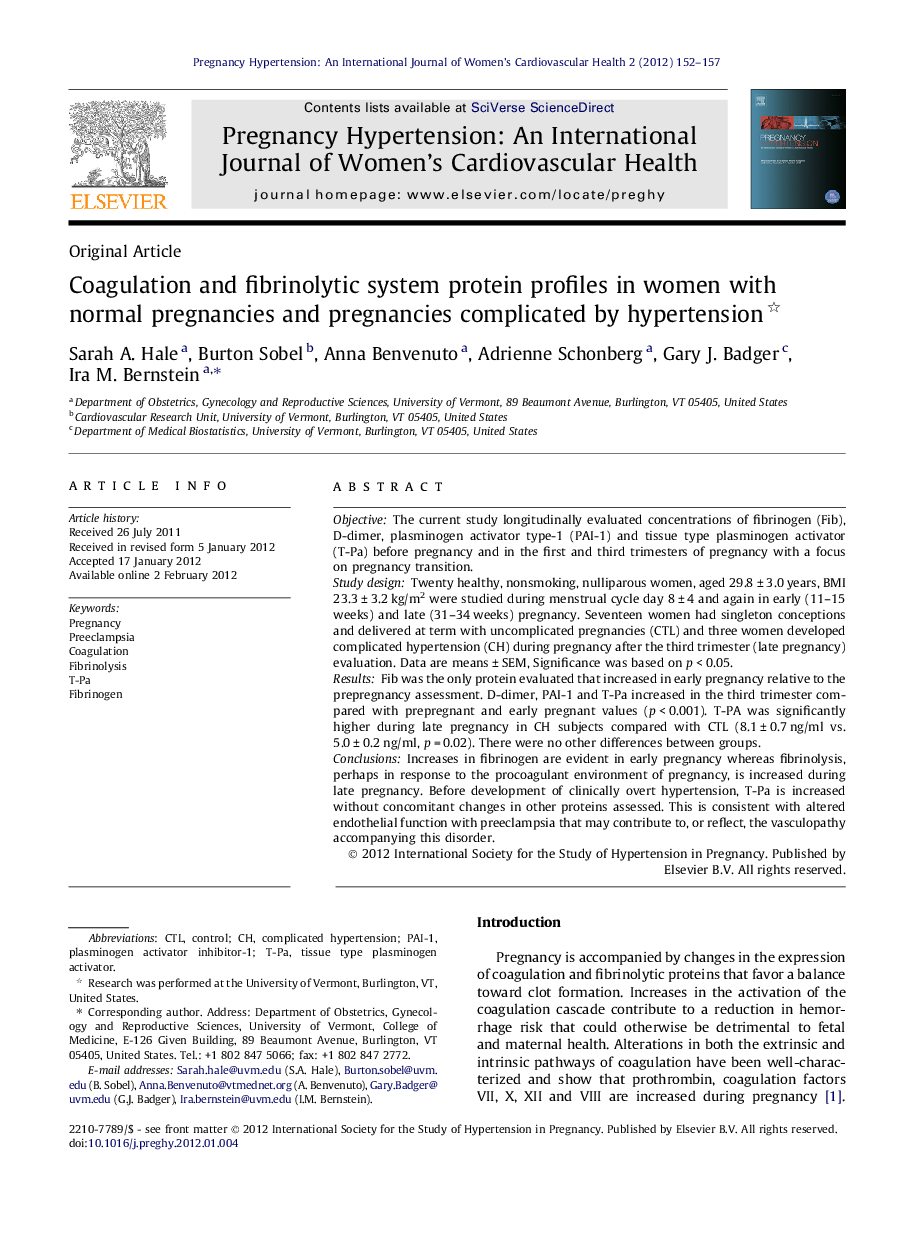| Article ID | Journal | Published Year | Pages | File Type |
|---|---|---|---|---|
| 3006090 | Pregnancy Hypertension: An International Journal of Women's Cardiovascular Health | 2012 | 6 Pages |
ObjectiveThe current study longitudinally evaluated concentrations of fibrinogen (Fib), D-dimer, plasminogen activator type-1 (PAI-1) and tissue type plasminogen activator (T-Pa) before pregnancy and in the first and third trimesters of pregnancy with a focus on pregnancy transition.Study designTwenty healthy, nonsmoking, nulliparous women, aged 29.8 ± 3.0 years, BMI 23.3 ± 3.2 kg/m2 were studied during menstrual cycle day 8 ± 4 and again in early (11–15 weeks) and late (31–34 weeks) pregnancy. Seventeen women had singleton conceptions and delivered at term with uncomplicated pregnancies (CTL) and three women developed complicated hypertension (CH) during pregnancy after the third trimester (late pregnancy) evaluation. Data are means ± SEM, Significance was based on p < 0.05.ResultsFib was the only protein evaluated that increased in early pregnancy relative to the prepregnancy assessment. D-dimer, PAI-1 and T-Pa increased in the third trimester compared with prepregnant and early pregnant values (p < 0.001). T-PA was significantly higher during late pregnancy in CH subjects compared with CTL (8.1 ± 0.7 ng/ml vs. 5.0 ± 0.2 ng/ml, p = 0.02). There were no other differences between groups.ConclusionsIncreases in fibrinogen are evident in early pregnancy whereas fibrinolysis, perhaps in response to the procoagulant environment of pregnancy, is increased during late pregnancy. Before development of clinically overt hypertension, T-Pa is increased without concomitant changes in other proteins assessed. This is consistent with altered endothelial function with preeclampsia that may contribute to, or reflect, the vasculopathy accompanying this disorder.
